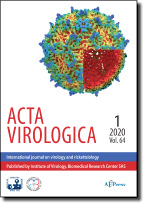Abstract: This study aims to fill a knowledge gap in our understanding of Omicron variant receptor-binding domain (RBD) interactions with host cell receptor, angiotensin-converting enzyme 2 (ACE2). Protein-protein docking, scoring, and filtration were all performed using the HDOCK server. A coarse-grained prediction of the changes in binding free energy caused by point mutations in Omicron RBD was requested from the Binding Affinity Changes upon Mutation (BeAtMuSiC) tools. GROMACS was utilized to perform molecular dynamics simulations (MD). Within the 15 mutations in Omicron RBD, several mutations have been linked to increased receptor affinity, immunological evasion, and inadequate antibody response. Wild-type (wt) SARS-CoV-2 and its Omicron variant have 92.27% identity. Nonetheless, Omicron RBD mutations resulted in a slight increase in the route mean square deviations (RMSD) of the Omicron structural model during protein-protein docking, as evidenced by RMSDs of 0.47 and 0.85 Å for the wt SARS-CoV-2 and Omicron RBD-ACE2 complexes, respectively. About five-point mutations had essentially an influence on binding free energy, namely G6D, S38L, N107K, E151A, and N158Y. The rest of the mutations were expected to reduce the binding affinity of Omicron RBD and ACE2. The MD simulation supports the hypothesis that Omicron RBD is more stably bound to ACE2 than wt SARS-CoV-2 RBD. Lower RMSD and greater radius of gyration (Rg) imply appropriate Omicron structure 3D folding and stability. However, the increased solvent accessible surface area (SASA) with a greater Omicron shape may have a different interaction with receptor binding and regulate virus entrance. Omicron RBD's mutations help it maintain its structural stability, compactness, ACE2 binding, and immune evasion.
|
 download file
download file
